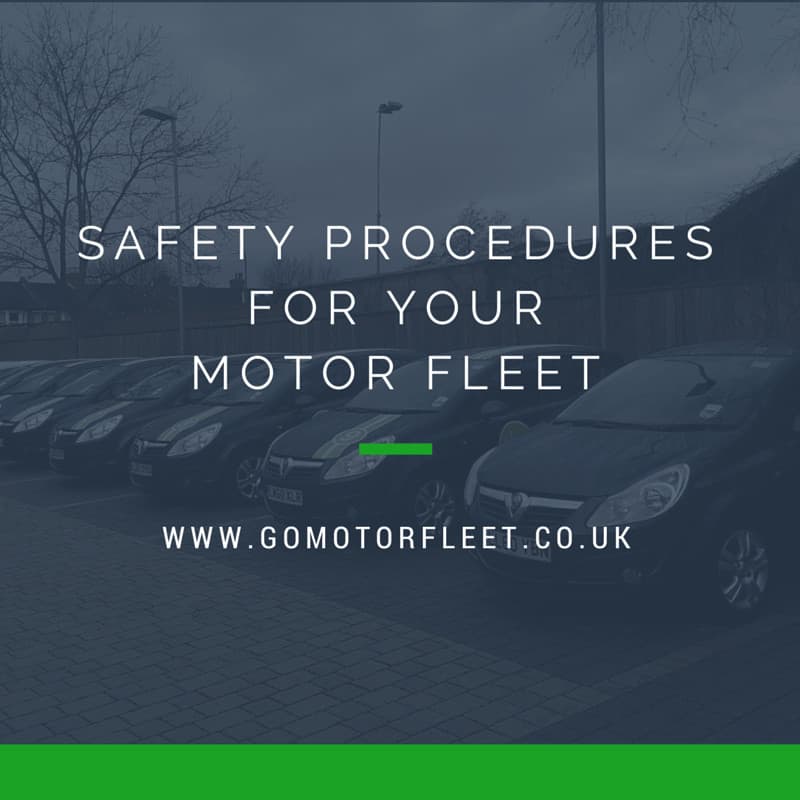
When it comes to managing a fleet, let alone a business, it is important that the safety of your staff is top of the list. This can be achieved in a variety of ways from assessing situations when accidents do occur to regular maintenance checks on the vehicles that will be driven. Before you can decide on the best ways to implement safety procedures for your drivers, you need to determine which type of fleet you are managing as the processes put in place are likely to differ.
Fleet Types
If you, as a business, own the vehicles that are being used for company purposes this is slightly easier to manage than a grey fleet. A grey fleet is the term used to describe vehicles that are used for business purposes but are not owned by the company. These are slightly harder to manage because ultimately the vehicle belongs to the employee but if it is being used for business purposes, it is also the responsibility of the employer to know that the vehicle is fit for purpose.
Safety Plans
Now that you have established which type of fleet you are managing you can decide on the best course of action for a safety plan. Not only do you have to consider the safety of your drivers but the safety of others on the road. This is because, if your drivers have poor driving habits this is likely to endanger others on the road. If the worst were to happen, people could get injured, your bottom line might end up a little dented and your brand’s reputation could go up in smoke. It’s human nature for people travelling along a road to slow down when they get to an accident, the last thing you want them to see as a fleet manager is your livery on a vehicle that is facing the wrong way round!
It is essential that all of your drivers receive fleet safety training; if you are unsure where to start with building your safety programme then there are some useful resources you can turn to. Use the Road Traffic Act 1988 as a starting point as this also outlines other regulations that you as an employer need to know. This will ensure you are on top of all your responsibilities as ignorance is not a valid reason. You should also read the Health and Safety Offences Act and if you are still unsure of what you need to add to your training programme, you could also contact an accredited fleet training body for some extra advice.
Industry Standards
When it comes to setting your safety programme you should consider the standards set by the industry. The best place to get up to speed on these standards is ‘The National Standards for Driver and Rider Trainers’ and ‘The National Standards for Riders’. This will ensure that your safety programme is meets the standards that have been set by the industry and that your drivers can strive for better driving habits.
Not only do you have to ensure that your staff are properly trained but you also need to know that the vehicles they are driving are suitable for the road. When it comes to a fleet that is owned by the business, this is relatively easy. You can be in charge of when each vehicle is due its service and MOT, when the road tax needs updating and when the insurance policies are due. Usually if you are operating a fleet, you will opt for motor fleet insurance because it means just one annual policy to renew rather than tens, maybe hundreds. If you are operating a grey fleet, this is likely to take some more organisation. It is likely that the owners of the vehicles will be organising their own services and MOTs however, it is essential that you are up to date with when they are due. It is prudent to take photocopies of all documents that are required for a vehicle to be on the road so you are confident each vehicle is safe to be on the road.
Accidents
Another area outside of the driving itself that also needs some thought when it comes to training are loading and unloading procedures. If you are a courier company for example, it is likely that the drivers will be doing some heavy lifting so it is vital that they are trained on the best way to do so.
If there worst were to happen, it is also vital that you have a post-accident safety procedure. This will ensure that you have a proper process to evaluate the situation that occurred and put measures in place to prevent it happening again. It is suggested that there are a variety of levels to this procedures which are dependent on the severity of the accident.
